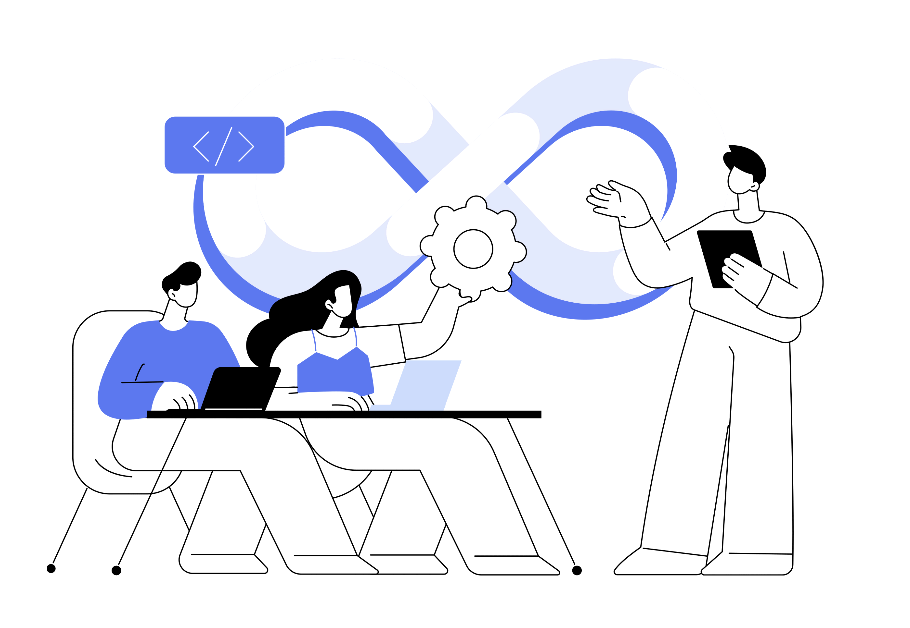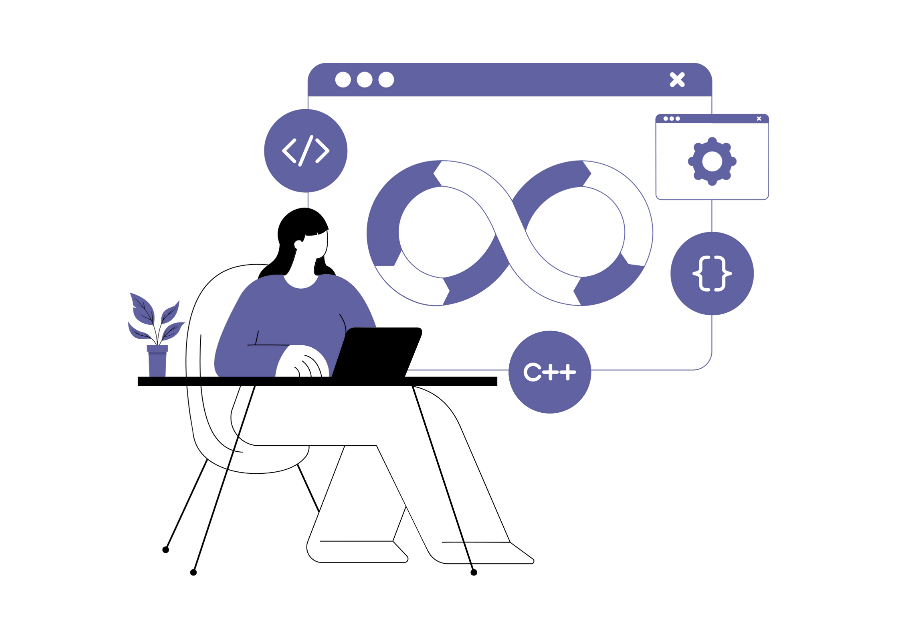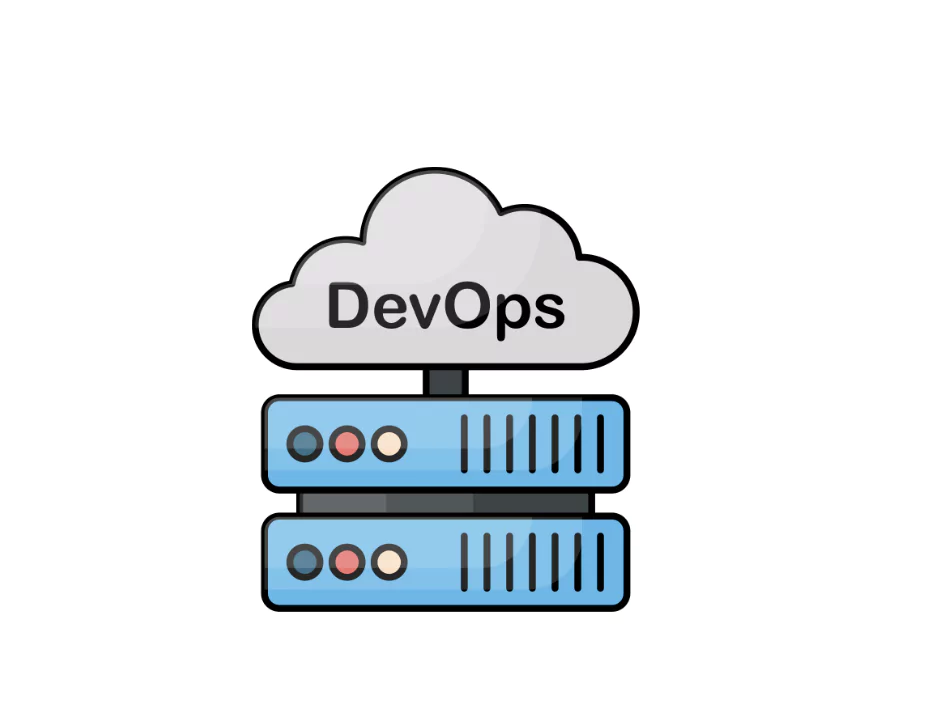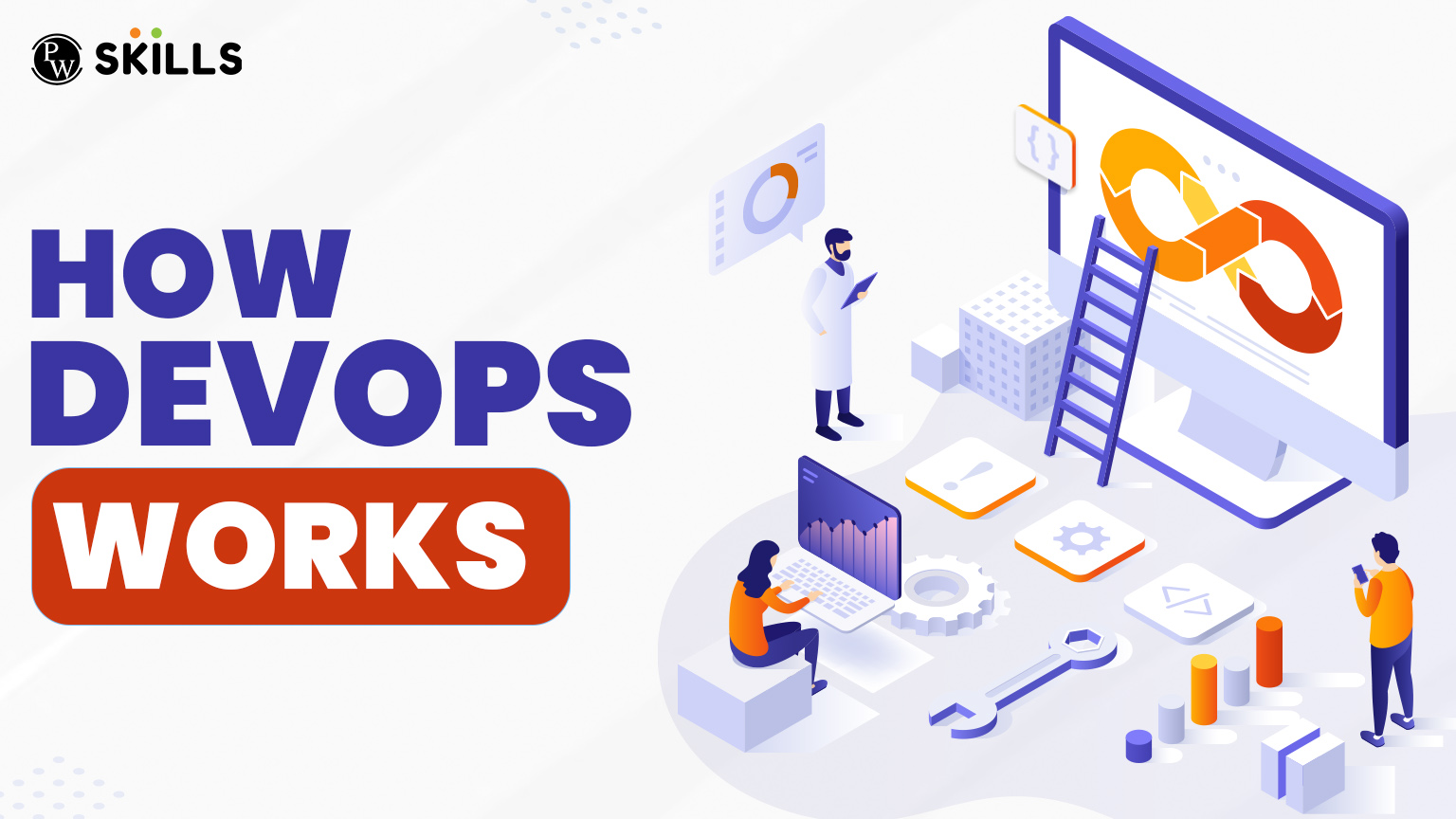And how devOps works? Well it is a question that is fascinating to young professionals. DevOps is rapidly taking over the new software development life cycle with its agile methodologies to continuously deliver and improve.
DevOps is a software development method where developers and operations teams come together to speed up software delivery using various automation tools. If you want a career in DevOps or if you are preparing for an interview in DevOps roles then you must know how devOps works and its complete methodologies.
What Is DevOps?
DevOps is a set of agile methodologies which consists of effective practice and tools to automate and optimise the software development process. They build a bridge between the development team and IT teams. It makes organisation delivery of end products faster and in a more effective manner.

DevOps removes the barriers between the Development and operations where teams work together to handle the entire software development life cycle from planning to maintenance phase. The major goal of devOps is to automate the entire workflow of software development life cycle by integration of development (dev) and operations (Ops) teams.
What Do We Need For DevOps to Work?
DevOps is a strategic approach based on agile methodologies which needs several key components, practices and cultural shifts which come together to make a well integrated environment with people, processes and technology that enables faster and more reliable software delivery.
- The most important of all is that the Dev and Ops team need to work together eliminating silos for effective collaboration.
- Greater emphasis on agility and iterative workflow with small and frequent releases along with quick feedback loops.
- Automation is the priority and DevOps can automate code building, testing, deployment, monitoring which reduces chances of human error, save resources, and speed up processes.
- A key part on how DevOps work is related to uses of tools like Jenkins, GIthub Actions, Kubernetes, Ansible, and more.
- The most important principle of DevOps is to enact Continuous Integration (CI) and Continuous Deployment (CD) as it helps shorten development cycles and increase delivery speed.
- DevOps works best in a Cloud based environment as the use of containers and orchestrators like kubernetes help in scaling and deployment.
Principle of DevOps
The principle of devOps greatly influences how DevOps works in the software development domain.
The principle of devOps is based on collaboration, communication, and shared responsibility between the development and operations team to deliver the software application faster, in a more reliable way, and with high quality.
DevOps focus on automation, continuous integration and delivery, infrastructure as a code, monitoring, and rapid feedback loops to streamline the complete software development life cycle.
How DevOps Work?

DevOps works in four major phases i,e. Continuous development, Continuous testing, Continuous deployment and Continuous monitoring. Let us learn about each of these phases in detail to get familiar with how DevOps work.
1. Continuous Development
This stage consists of developers who are planning, coding and building the software applications. This phase involves all activities related to planning and coding applications. It requires gathering research and deliverables, design, source code creation, version control and more.
Developers frequently use Git, Bitbucket, JIRA, Azure Boards, Trello, and more. The main goal is to maintain a steady and agile development pace of the SDLC which enables developers to push updates, fixtures and new features rapidly.
2. Continuous Testing
This stage consists of automated and manual testing of the code structure, types and more. It helps in detecting bugs, anomalies, and more in the pipeline. Unit testing, integration testing, system tests, and more are in the list of testing processes.
DevOps implement automated regression testing with parallel test execution. Selenium, TestNG, Postman, Jenkins, and more tools are used to ensure automation, CI integration, code quality analysis, and more.
3. Continuous Deployment
This is the third stage of how devOps work after the successful testing automation the code is automatically deployed to staging or production environments. The load balancing, deployment to staging process takes place during this stage of the Software development life cycle.
The containerized application is pushed into the server of choice in this stage which also includes virtualization and configuration management along with containerization.
4. Continuous Monitoring
In this stage, the application is continuously monitored for bugs and performances. It can collect feedback of the users interacting with the application and make necessary changes as per needs and approval.
User behavior analytics is prepared to track and monitor in real time along with alerts on different stages such as downtime, heavy congestions, and more. Prometheus, Grafana, Splunk, Datadog are some of the tools used to monitor the development of the application.
![]() Join Our Devops & Cloud Computing Telegram Channel
Join Our Devops & Cloud Computing Telegram Channel
![]() Join Our Devops & Cloud Computing WhatsApp Channel
Join Our Devops & Cloud Computing WhatsApp Channel
The DevOps Complete LifeCycle

DevOps lifecycle plays an important role in learning how devOps works. Let us know some of the major phases of devOps lifecycle.
1. Planning
This is the first step where different teams decide what needs to be built for application. All teams including Developers, operations, and stakeholders work together to define requirements, set goals, and plan features or fixes.
Some of the major tools are important, such as JIRA or Trello are used to track progress and tasks.
2. Development
In this stage, the actual coding takes place for the complete software development. This stage is important to learn how devOps works. Developers write and manage the source code using version control systems like Git.
The focus is completely on building software features in a collaborative and modular way to ensure easy updates and maintenance.
3. Continuous Integration (CI)
Here, the newly written code is regularly merged into a shared repository. Automated tools like Jenkins or GitHub Actions check the code for errors by running tests. This ensures that changes do not break the existing application and keeps the software ready for release.
4. Testing
Automated testing is performed to verify that the application works as expected. It checks for bugs, security issues, and performance problems. Testing is an important part in learning how devOps works.
Important tools like Selenium or JUnit are used to run tests quickly and consistently every time new code is added.
5. Release
Once the complete automated testing is successful, the software application is packaged and released into a staging or pre-production environment. This allows teams to perform final checks and approvals before the product reaches actual users.
6. Deployment
In this phase, the software is deployed to the live production environment. Some of the important tools like Docker, Kubernetes, or Spinnaker ensure that the deployment is fast, smooth, and often automated, with little or no downtime for users.
7. Operate
After deployment, the application is made available to end-users. The operations team ensures that everything runs smoothly, handles user issues, and manages system performance.
8. Monitor
The system is continuously monitored for errors, performance issues, or user feedback. Tools like Prometheus, Grafana, or Datadog alert teams if something goes wrong so they can fix issues quickly and improve future releases.
Different Tools used In DevOps Practice

Many devOps tools are used at different stages of devOps to enact automation and efficiency in SDLC. Let us know some of the crucial tools to learn more about how devOps works and roles of these tools.
1. Tools Used in Planning Phase
The project planning, collaboration, task management, documentation and real time communication is handled by different tools with advanced features.
- JIRA: This tool helps in project planning, issue tracking, with agile boards, backlog, grooming, and more.
- Trello: This tool helps in lightweight collaboration with task management with features like kanban boards, checklists, and more.
- Slack: This tool helps in establishing real time team communication with workflow automation, integration and bots features.
2. Continuous Integration (CI)
- Jenkins: This tool automates build, test and deploy using features like pipelines, open source and plugins.
- Github Actions: It manages the CI/CD workflows within Github with native integrations.
- CircleCI: It is a cloud native CI/CD which provides features like fast pipelines, Github integrations, and more.
3. Configuration Management
This tool is used to automate configuration, deployment, and scale applications.
- Ansible: It automates configuration, application deployment and more with YAML playbooks and agentless. Ansible simplifies and automates tasks like configuration management, application deployment and provisioning.
- Chef: This is a popular configuration management tool which provides infrastructure automation and management with automated tested processes and with Ruby Scripts and features like test driven dev and chef recipes.
4. Containerization
Containerization is a process of packaging applications together with its dependencies into one complete package which is also known as a container.
- Kubernetes: It provides features like load balancing, self healing, auto scaling as it serves as a container and orchestration system which automates deployment, management and scaling of containerized applications across multiple servers and cloud environments.
- OpenShift: Openshift is a containerization tool developed by Red Hat which is used to manage the lifecycle of platforms based on containers. They also manage their dependencies on different multiple platforms.
5. Infrastructure as a Code (IaC):
It is a method used to manage IT infrastructure used to support and manage computer infrastructure using code instead of simple manual settings and more.
- Terraform: Terraform is a IaC tool which is used to automate most of the infrastructure based tasks. It’s an open source tool written in the Go language program.
6. Other DevOps tools
You need to learn about these tools also to get familiar with how devOps works.
- Selenium: It is an open source tool which is used for automated testing of web applications which means you will not have to pay anything for licensing for web applications.
- Postman: Postman is an API platform used for building and working with APIs which is used to optimise every process in the development life cycle.
- Prometheus: Prometheus is an open source which is used for collecting and processing data based on time series. It handles the servers,infrastructures and monitor applications by collecting metrics from time series databases.
Also Read:
- What is DataOps? Complete Explanation For Beginners
- What Is Cloud Native? Components, Benefits & Examples
- What is Cloud Security? A 12 Steps Complete Guide
- What is ‘chown’ Command in Linux – 7 Key Steps to Master ‘chown’
Master DevOps and Tools with PW Skills
Discover a wide range of career opportunities in DevOps and Cloud Computing with the PW Skills DevOps and Cloud Computing Course and master in-demand tools like Ansible, Kubernetes, Jenkins, and more with our interactive coursework, dedicated mentors and more.
Get real-world projects, practice exercises, module assignments to help you strengthen everything you learnt throughout the course. Hurry! Enroll in this course and start your learning journey. Become a certified devOps engineer with pwskills.com.
How DevOps works FAQs
Q1. What is DevOps?
Ans: DevOps is a set of agile methodologies which consists of effective practice and tools to automate and optimise the software development process.
Q2. How devOps work in real world?
Ans: DevOps is based on agile methodologies which works on automation and integration with development and operations team under different stages like Continuous development, Continuous testing, Continuous deployment and Continuous monitoring.
Q3. How many stages are in DevOps working?
Ans: There are generally four stages in the working of devOps i,e. Continuous development, Continuous testing, Continuous deployment and Continuous monitoring. Learn more about how DevOps works in this tutorial blog.
Q4. Which is the best tool in DevOps?
Ans: There are many tools used to implement devOps practice in real time. Some of the popular tools are JIRA, Jenkins, Chef, Ansible, Docker, Terraform, Kubernetes, Postman, and more.
Q5. Why do we need DevOps?
Ans: DevOps removes the barriers between the Development and operations where teams work together to handle the entire software development life cycle from planning to maintenance phase.

